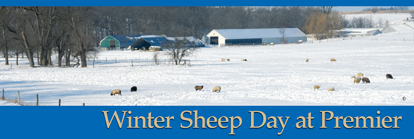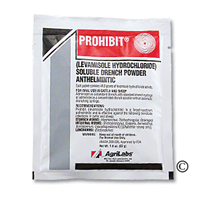| MESSAGE FROM THE OWNER
Small scale food production - less efficient but more socially & locally beneficial?
An analysis of US food production shows two opposing trends occurring at the same time:
- Larger farms become ever larger. 140,000 have become mega-farms (they average $700,000 in adjusted gross income, are 7% of the total number of farms and produce 68% of nations food). A matching trend is occurring in the food distribution system with fewer but larger "players" processing and distributing 80% of the nation's food. The result of this long-term trend is efficiency levels (if measured simply as food-calories/proteins produced per hour of human labor) that was not even imagined 30 years ago. Whatever one's philosophy about it's merits and demerits the nation's mega-farms are a remarkable demonstration of the combination of time, money, intelligence, innovation, labor, land and livestock.
- On the other hand small-scale food production in the USA is also growing rapidly with more folks producing an ever-wider range of food—many doing so on weekends and evenings as a supplement to their day jobs. The food distribution systems of small-scale agriculture don’t rely on semi-trailers, warehouses, railroads, planes and mega stores. Instead they distribute direct to their own table or sell/give to neighbors, relatives and friends; to local restaurants; via farmer's markets and select local stores. If labor hours per food calorie is the sole measurement, it's obvious that the efficiency of these smaller farms is much less than that of industrial agriculture.

But food-calories produced per hr of labor is not the whole story. Consider the benefits that smaller-scale food production and distribution offers:
- Mega-farms and mega food distributors are inclined to look to cities and larger towns for goods and services. By contrast, small producers almost always obtain their goods and services locally—and thereby keep small communities thriving that would otherwise shrivel.
- Small-scale food sales (farmer-markets, to neighbors and relatives, etc), by their very nature, involve a high degree of social interactions between producer and purchaser. By contrast mega farms and distribution systems, in their understandable drive for profits and growth, focus first on reducing the human element in their systems—because labor costs money. But social interactions are the essence of living. If we humans can't obtain social benefits at work or while purchasing our food we inevitably search elsewhere for them. As a result many of the $ saved by mega farm/food distribution systems are replaced by more $ expended elsewhere.
- Small-scale food production gives families another useful way to use spare hours during evenings and weekends. The need to weed gardens, feed animals, and collect eggs provides exercise and focus to adults and children who might otherwise become couch potatoes and/or computer-game addicts. So it's not wrong to suggest that small-scale food production and distribution has health benefits (mental and physical) for it participants that would not occur if the same family had no garden, no chickens, no sheep, and no cows and instead simply purchased their food needs at the mega food stores.
- Small-scale food production provides employment as a direct result of it's "inefficiency". The USA is experiencing a sea change in the employment arena. For 100 years it was relatively easy for displaced smaller farmers to sell out to larger farmers and readily find employment in towns and cities. In most cases the ex-farmers household income actually rose when this occurred. This effect was described the famous economist and thinker J. Schumpter as "creative destruction". But I suggest that, with the rise of low-cost manufacturing overseas, the creative part of Schumpter's “creative destruction” is much less likely. Instead we see that jobs lost in the USA to improvements in efficiency are more likely to create a lasting social drain on the employee, community, state and nation. It's interesting to note that farm-states (IA, NE, KS) are in the top ten states for loss of population according to Forbes Magazine. These losses are occurring in the rural portions of those states —not in their cities. It’s hard to see this as a positive result.

Please understand that I'm not suggesting that modern-scale food production and distribution systems are bad. To the contrary I consider them essential. What I'm suggesting is that all of us, and particularly leaders of communities, states and our nation, need to more fully appreciate the less obvious cultural benefits of the small, part-time food producers. These benefits are harder to measure than unit costs of production -- but even harder to replace when they are no longer there.
We at Premier extend our best wishes to you all through the Christmas and New Year season. Life is precious and fleeting. Treasure each day and moment.
Stan Potratz, Owner
COMING SOON

Winter Sheep Day at Premier - February 5, 2011
Premier and Iowa State University will be hosting a Winter Sheep Day at Premier, Saturday February 5th from 10:00AM to 3:00PM. There will be $5.00 per person registration fee. Lunch will be provided by Premier.
The agenda includes:
- Management Tips for Lambing Season
- Lamb marketing impact of the sale of Iowa Lamb to Superior Farms
- Feeding Baleage to Ewes (Premier's first yr. Results feeding 700 ewes)
- Livestock Guard/Protection Dogs (Premier has 10)
- Question and Answer opportunity with ISU's Extension Specialists
- Opportunity to tour Premier's sheep barns
- If you would like to take home product the day of the event, please place your order with us by February 4th (so we may have time to prepare your order).
If you are interested in attending please RSVP to Joe Putnam or Cheyenne Miller.
Premier
2031 300th St
Washington, IA
800-282-6631
NOW AVAILABLE
Prohibit® Anthelmintic Powder
 December to January newsletter December to January newsletter
Premier has recently received a shipment of Prohibit® anthelmintic powder. Due to the irregularity of shipments of Prohibit® to Premier, we recommend that if you need it, order now to avoid delays later. We are not sure how regularly our shipments will arrive now that Prohibit is off of manufacturer's backorder.
Prohibit® is a broad spectrum anthelmintic that is effective against the following nematode infections in cattle and sheep: stomach worms, intestinal worms and lungworms.
For other livestock treatments, click here.
PREMIER TIP
OB Gloves: Sage Advice From One of Premier's Shepherds

Lambing season will be arriving shortly and with that comes the possibility of needing to assist a ewe or nanny. When that time comes, be sure to wear OB gloves that will protect both you and the mother-to-be.
If you use shoulder-length OB gloves, the fingers are sometimes a little too roomy. You can be remedy this very easily by wearing a regular pair of latex surgical gloves over them. This combination provides the coverage of an OB glove with the dexterity of a surgical glove.
For Premier's lambing & kidding supplies, click here.
By Carl McCall, Premier Shepherd
VIP ARTICLE
Abortions in Sheep - Causes, Control and Prevention
AS-1317, October 2006
By Justin S. Luther, Ph.D., NDSU Extension Sheep Specialist
The lambing season can be the most exciting time of the year for a sheep producer.
The long awaited opportunity to evaluate that new ram or great set of replacement ewes finally arises. So, when the first two ewes abort, the next ewe has a stillborn lamb and the fourth ewe has a set of twins that are weak at birth and soon die, the experience can be very depressing and frustrating. These are all signs of an infectious abortion outbreak that should motivate you to 1) identify the cause(s) of abortion in your flock,
and 2) develop a plan to control or prevent abortions from occurring in the future.
Identifying the Causes of Abortion
Identifying the exact cause of abortion in your flock requires knowledge of the clinical signs, flock history and laboratory diagnostics. You should deliver the proper samples (fetus and placenta) to your local veterinarian or state diagnostic laboratory. Samples always should be placed on ice in a spill-proof, insulated container. Your diagnostic laboratory likely will provide results for one of the four common types of infectious abortion. The clinical signs and mode of transmission for each of these four types are described below.
-
Enzootic abortion is caused by Chlamydia psittici. This organism will spread through infected fetuses, placentas, vaginal discharges, feces and nasal secretions. The organism enters the bloodstream but causes no signs of infection in the ewe unless she is, or becomes, pregnant. During pregnancy, the organism enters the uterus and causes inflammation of the placenta and death of the fetus. If infection occurs before conception, the ewe will abort during midpregnancy. If infection occurs during early pregnancy, abortion will occur 60 to 90 days thereafter. If infection occurs during mid or late pregnancy, stillbirths and weak lambs at birth may result.
Ewes in their first pregnancy are most susceptible to infection. In the Western U.S., isolated range flocks are highly susceptible when the organism is introduced. Similarly, Western ewes introduced into infected Midwestern flocks are very susceptible. Approximately 25 percent to 60 percent of ewes will abort, depending on the time of the outbreak relative to initiation of pregnancy. Older ewes will become immune to Chlamydia psittici, thereby minimizing the annual flock abortion rate to 1 percent to 5 percent. Chlamydia psittic infection also can occur in young lambs and may lead to pneumonia.
-
Vibrio abortion is caused by Campylobacter sp. The organism is discharged with the membranes, uterine fluids and fetus at the time of abortion. Transmission will occur when ewes ingest infected membranes or fluids, or through consumption of feeds contaminated with Campylobacter sp. If infection occurs during early pregnancy, the ewe likely will reabsorb the fetus. If infection occurs during midpregnancy, abortion will occur 10 to 20 days later. A late-pregnancy infection will result in stillbirths and weak lambs at birth.
In general, 20 percent of ewes in a flock will abort following introduction of Campylobacter sp.; however, some outbreaks have led to 80 percent or 90 percent of ewes aborting. As with enzootic abortion, older ewes may become immune, but 5 percent to 10 percent of the infected flock will continue to abort each year.
-
Toxoplasmosis abortion is caused by Toxoplasma gondii, a protozoa that causes coccidiosis in cats. Infection will occur following ingestion of feed or water that has been contaminated with oocyst-laden cat feces. If infection occurs during early pregnancy, the embryo or fetus generally will be reabsorbed and rebreeding may occur. If infection occurs during midpregnancy, abortion will occur and the ewe may be susceptible to a secondary infection. During late pregnancy, infection will lead to abortion, stillbirths, mummified fetuses or weak lambs at birth.
Abortion can occur in 5 percent to 50 percent of the ewe flock, with typical losses averaging 15 percent to 20 percent of the lamb crop. In healthy, nonpregnant ewes, toxoplasmosis will not cause clinical symptoms or detrimental effects.
-
Salmonella abortion is a rare occurrence that is caused by various salmonella organisms. Stress and the number of ingested salmonella bacteria will determine whether the pregnant ewe aborts. If abortion does occur, it usually is during the final month of pregnancy. Most of the ewes will exhibit diarrhea, and some will die from metritis, peritonitis and/or septicemia. Healthy, young lambs also may contract the disease and die.
Controlling Abortion
When faced with unexpected abortion outbreaks, here are some general practices that producers can use to minimize the risk of spreading the infectious organism:
- Check feed and water supplies for sheep and cat feces contamination.
- Sanitize feeding and watering equipment.
- Separate ewes showing signs of abortion and house them apart from the remainder of the flock.
- Properly dispose of (burn or bury) the infected placenta and fetus.
- Do not feed ewes on the ground.
The following treatments also can be used to minimize the number of ewes aborting in an infected flock:
- Immediately vaccinate the remaining pregnant ewes for enzootic and/or vibrio abortion.
- Begin feeding 500 milligrams (mg) of chlortetracycline per head per day for five days, and then reduce to 250 mg per head per day for the remainder of the pregnancy.
- If the outbreak is severe, inject all ewes with long-acting tetracycline (LA 200) at the rate of 10 mg/pound subcutaneously.
- If salmonella is the causative agent, inject ampicillin at the rate of 5 mg/pound. Spectinomycin also may be used at the rate of 5 mg/pound per day for three days.
Preventing Abortion
After an abortion outbreak, you must develop a plan for preventing abortions from occurring in the future. You should consider the following guidelines:
- Vaccinate. Vaccines are available for vibrio and enzootic abortion. Campylobacter fetus (cause of vibrio abortion) vaccine is given 30 days before breeding and repeated 60 to 90 days later. Chlamydia psittici (cause of enzootic abortion) vaccine is given 60 days before breeding and repeated 30 days later. (Note: The supply of both vaccines has been unreliable, so you need to place your order early in the year)
- Maintain sanitary feed and water supplies.
- Manage first-lambing ewes in a separate flock.
- Do not purchase replacement ewes from an infected flock.
Summary
Infectious abortions result from four major causes. Accurate determination of the infectious agent requires a diagnostics laboratory.
Antibiotics, vaccines and sanitary facilities all can be used to minimize the risk of abortions and ultimately improve reproductive efficiency of the ewe flock.
See article online at:
http://www.ag.ndsu.edu/pubs/ansci/sheep/as1317w.htm
EMPLOYEE SPOTLIGHT
Karissa Bonebrake
Karissa Bonebrake is our featured employee this month. She has been working in the Returns department at Premier for about two months. Her duties include opening, sorting and handling the paperwork for all returns, repairs and sharpening items that arrive, as well as helping with various other projects as needed. She likes the fast-paced environment and enjoys the work atmosphere.
Karissa lives near Ainsworth, Iowa, with her husband/best friend Josh and their three children: Brenton, 7; Logan, 5; and Reece, 17 months. They also have a dog, Gordy, and a cat, Milo.
Her favorite pastimes are spending time with her family, boating, camping and swimming, and she says her favorite statement is "Life’s too short, live your dream!"
|